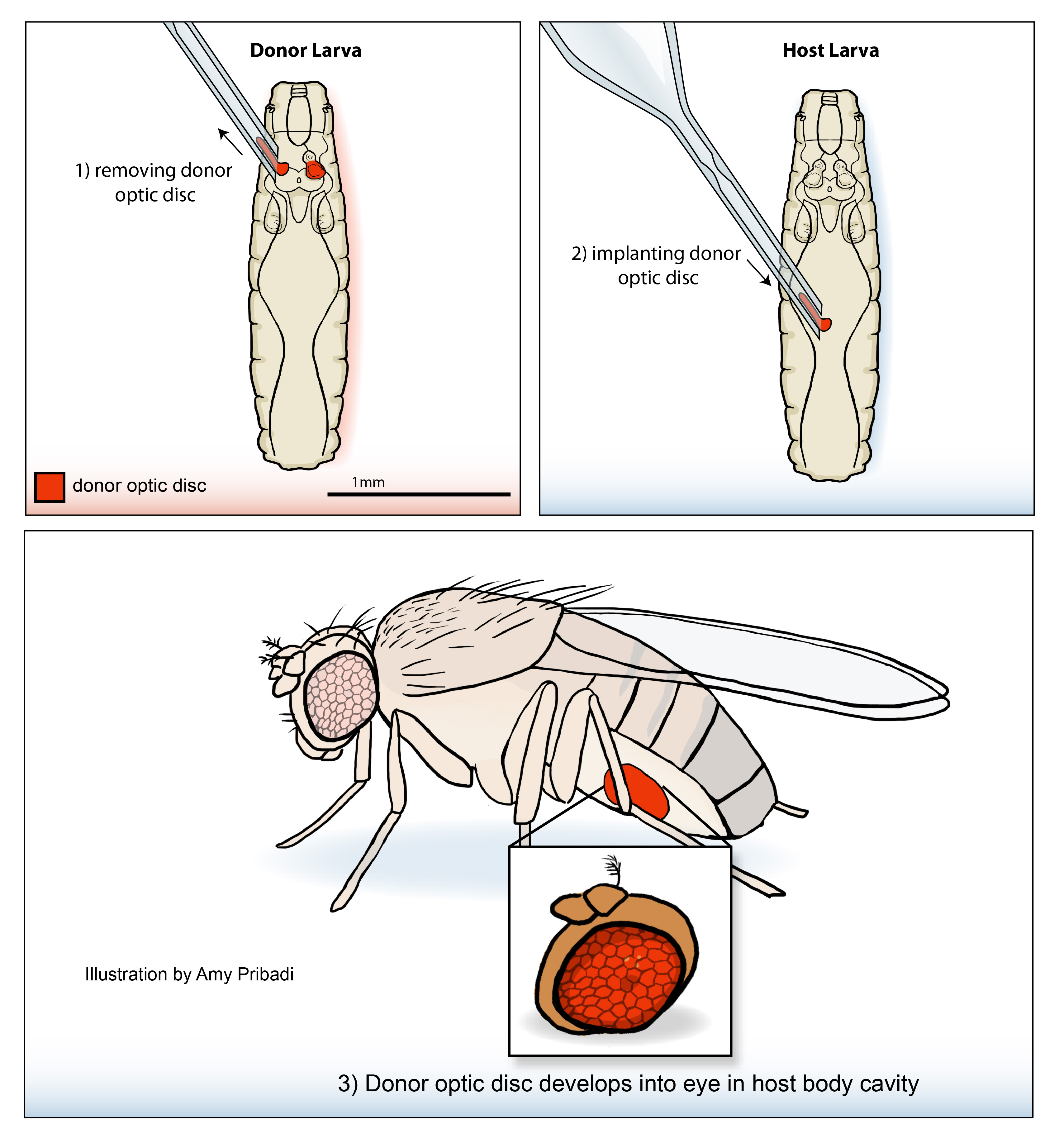Beadle and Ephrussi’s Technique to Transplant Optic Discs between Fruit Fly Larvae

In 1935, George Beadle and Boris Ephrussi developed a technique to transplant optic discs between fruit fly larvae. They developed it while at the California Institute of Technology in Pasedena, California. Optic discs are tissues from which the adult eyes develop. Beadle and Ephrussi used their technique to study the development of the eye and eye pigment. (1) The experimenter dissects a donor larva, which is in the third instar stage of development, and removes the optic disc (colored red) with a micropipette. Because the antenna disc is attached to the optic disc, they are often removed and transplanted together. (2) The experimenter then implants the optic disc into a host larva, in the part of the host that will develop into an adult abdomen. As the host larva matures to adulthood, the implanted optic disc develops into an eye inside the body cavity of the adult. (3) The adult host has an eye within its body, which Beadle and Ephrussi found by dissecting the adult hosts. If the antenna disc was also transplanted, sometimes the resulting eye developed with an antenna attached.
Keywords
How to cite
Publisher
Handle
Rights
Articles Rights and Graphics
Copyright Arizona Board of Regents Licensed as Creative Commons Attribution-NonCommercial-Share Alike 3.0 Unported (CC BY-NC-SA 3.0)

